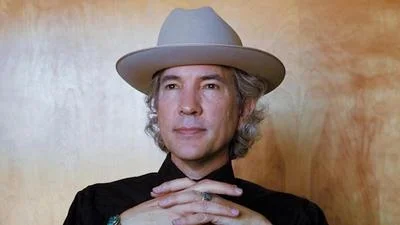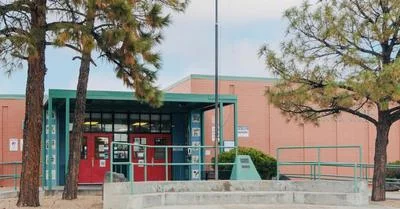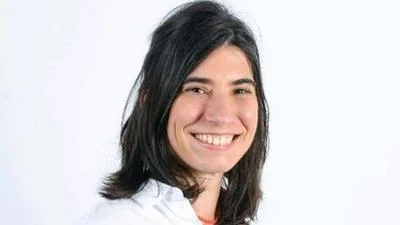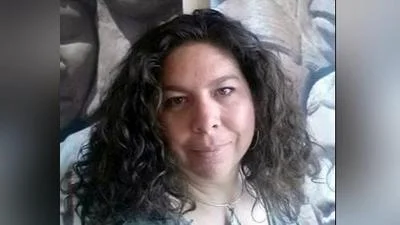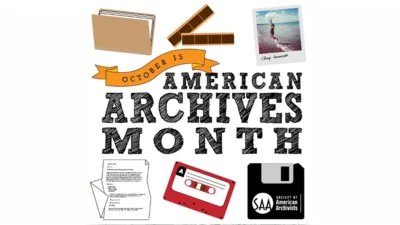Looking at the artwork for Score on Rain Panchos by Raven Chacon and Guillermo Galindo, one sees three raincoats hanging on the wall. The left and right raincoats are white; the middle raincoat is yellow. Illustrated on the raincoats are patterns, almost map-like. Below the raincoats one finds detritus culled from railroads: nails, anvils, hammers, and other metal objects.
If you didn’t know better, you’d think you’re looking at a standalone work, but you’d be wrong. The illustrations on the raincoats are the score for a musical composition, Caesura, a Latin word meaning “pause.” Combining tactical, physical objects (Score on Rain Panchos) and a musical composition (Caesura), the two, conjoined works are part of The Other Side of the Tracks exhibit, sponsored by 516 Arts.

Train route patterns, hobo symbols, and detritus for the composition Caesura. Photo by Brian C. Nixon
Presented on February 1, 2025, in the Railyard building in Albuquerque, New Mexico Caesura was a musical journey that examines the history of the railroads in the West, following train routes transcribed on the ground via tape and “hobo codes.”
Performed live by Raven Chacon, Guillermo Galindo, and guest percussionist Alan Zimmerman, Caesura was an unforgettable musical experience. For roughly 45-minutes, the musicians followed the patterned routes on the floor, playing the detritus as percussion instruments.

Co-composer, Raven Chacon, performing Caesura. Photo by Brian C. Nixon
I reached out to Guillermo Galindo to learn about the connection between the two pieces, particularly the physical (Score on Rain Panchos) and non-physical (music) aspects of the works.
Galindo explains, “I personally believe that we are connected to everything surrounding us, both the animate and the so-called inanimate. In this case the materiality and physicality of the objects are tied to their unique sound and to the interactions between the players and the objects, including the ponchos and the train detritus.
“The composition (printed on the ponchos) that reflects into the physical space (railyard floor) where one can move through the path and the connection with the train detritus. Caesura creates a very particular ecosystem where everything is intrinsically connected, [represented by] the human presence/absence in the ponchos and the kinetic body displacement of the players during the performance, where they become hobos. Then we have the physical space to be traveled, and the path dictated by the score allowing chance and choice.”
I watched as the three musicians did exactly as Galindo describes: They follow hobo symbols on the floor with cues (lines and circles) for playing the various objects as percussion instruments.
Concerning the site-specific “ecosystem” of Caesura, Chacon tells me via email, "A lot of my works are site-specific, and so they are not only responding to the history of a place, but also physically responding to acoustics of the architecture."
The architecture of the Railyards is magnificent, almost cathedral like. Colored glass, some broken, industrial edifices, and large open spaces greet the eyes. The audience sat in a circle as the performers walked the space performing the haunting composition, ethereal echoes of history resounded in the building, built between the 1880’s and 1915.
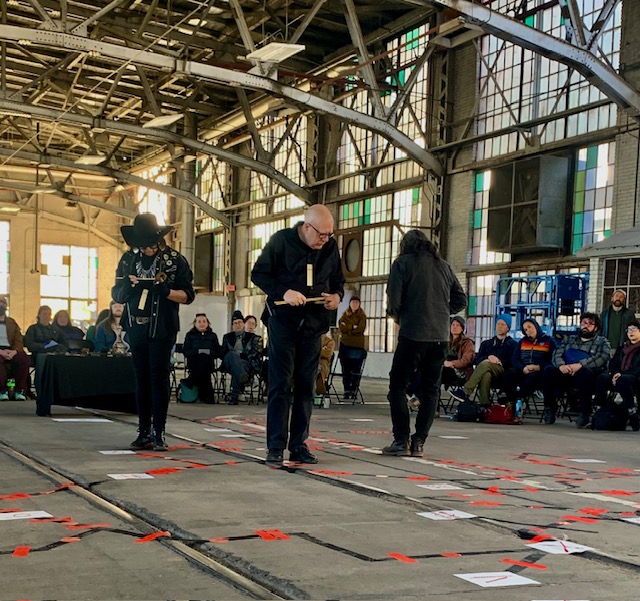
Galindo, Zimmerman, and Chacon Performing Caesura. Photo by Brian C. Nixon
One attendee stated it was “Dreamlike, a hobo using sound to locate his or her presence in the world.”
I found it a visceral, visual, and visionary performance.
To top it off: When an Amtrak train passed by at the end of performance—horn blaring, the audience cheered, a recognition of the timing, an almost prescience offering.
Mexican artist Guillermo Galindo is an experimental composer, sonic architect, performance artist, and visual media artist residing in California.
As a recipient of the Pulitzer-prize for his musical composition, Voiceless Mass, Raven Chacon is a composer, performer, and installation artist from Fort Defiance, Navajo Nation.

Albuquerque Railyards. Photo by Brian C. Nixon
To learn more about the composition and The Other Side of the Tracks, visit 516 Arts at https://www.516arts.org/programs/events/caesura-a-performance-by-raven-chacon-guillermo-galindo.
Brian C. Nixon, Ph.D., is Chief Academic Officer and professor at Veritas International University in Albuquerque. As a writer, musician, and artist, his interests surround the philosophical transcendentals: truth, beauty, and goodness. You can contact Brian via his Bandcamp email address: https://briancharlesnixon.bandcamp.com

